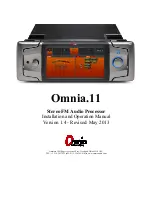
Hardware and physical integration guideline PCR Sensor A111
Page 21 of 32
2022-03-08
© 2022 by Acconeer
– All rights reserved
5 Physical Integration - Lens
For the applications where narrow beamwidth is required, additional lens antenna solution might be
added to the sensor to achieve narrow beamwidth and high radar loop gain.
Dielectric lens antennas have the advantage that they can be more compact and weigh less than horn
antennas and parabolic reflector antennas and they are easier to integrate to the product.
Acconeer have designed two type of lens to narrow the beamwidth and improve the radar loop gain.
First is the hyperbolic lens and the second is based on the phase correcting plate which is called Fresnel
Zone Plate (FZP) lens. The shape of the hyperbolic lens is chosen so that the rays passing through the
lens originating from the focal point will have the same phase shift, i.e. they will depart in-phase from
the lens.
In case of the FZP lens, the radius of each subzone and its thickness, are chosen so that rays
passing through the edges of neighboring subzones originating from the focal point have the same phase
shift.
depicts how the transition from the spherical waves to planar waves is done by two different
types of lens. The main parameters for the lens design are the focal point, dielectric constant of the lens,
and curvature (hyperbolic, zone radius and thickness).
Figure 22. Hyperbolic and FZP lens located at the focal distance of the sensor.












































